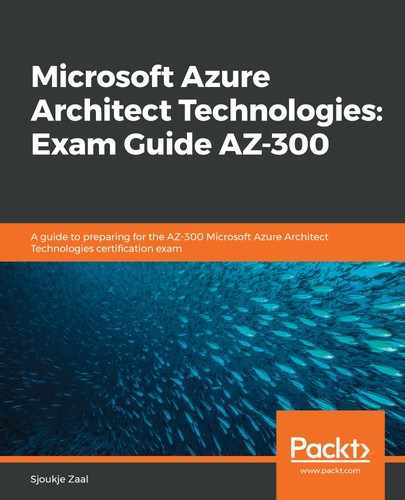The disaster recovery feature uses metadata disaster recovery and relies on primary and secondary disaster recovery namespaces.
Metadata means that it replicates only the entities such as queues, topics, subscriptions, and the service properties that are part of the service bus namespace. The actual messages are not replicated. For the primary and secondary namespaces, the former is the active namespace and receives the messages. The latter is a passive namespace and doesn't receive the messages. The metadata is kept in sync between both the namespaces. Therefore, both can receive these messages. To make sure that only the active namespace received the messages, you need to configure an alias. This is basically a disaster recovery configuration. By configuring an alias, a fully qualified domain name (FQDN) connection string is provided, which can be used by applications to connect to the namespace.
To set up the initial failover, you have to perform the following steps:
- Set up a primary namespace: First, you must create a primary namespace. This can be an existing namespace.
- Set up a secondary namespace: Then, you need to create the secondary namespace.
- Create pairing: After that, you pair the two of them. This will create an alias that you can use to connect to the Service Bus. Only new namespaces can be added to the failover pairing.
- Monitoring: Finally, you have to set up some monitoring to determine whether failover is necessary. Typically, automatic failover isn't possible because the service is part of a large ecosystem. Failovers must be performed in sync with other applications or infrastructure components.
If you initiate the actual failover, follow these steps:
- You want to perform the failover again in the case of a second outage. Therefore, it is highly recommended to set up another passive namespace and update the pairing.
- When the former primary namespace is available again, you can pull the messages from it. Then, you can delete the old primary namespace or use it for regular messaging outside the geo-recovery setup.
